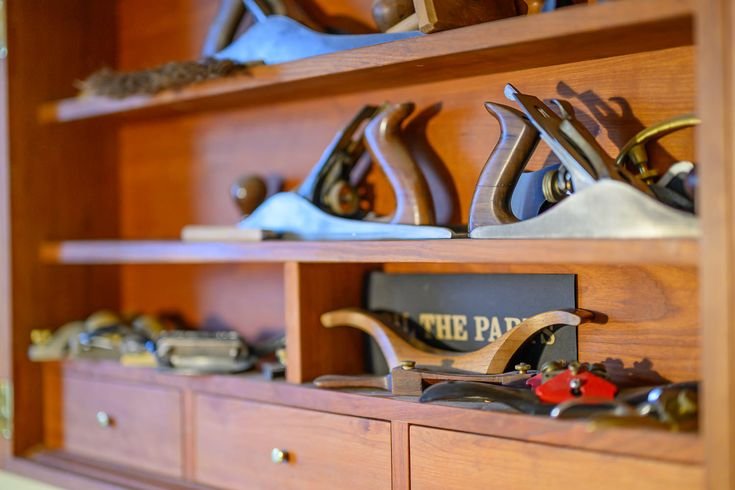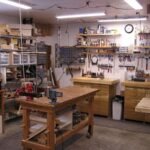Coffee, Wood, and a CNC Journey
You ever had one of those mornings where you just stare out the window, wrapped in your favorite sweater, clutching that cup of coffee like it holds the secrets to the universe? Yeah, that’s me every Saturday morning. I love sitting there, letting the steam rise up and fog the glass a bit as I think about my recent woodworking projects. It’s a small-town ritual of sorts.
Now, I’ve been dabbling in woodworking for a while, but I recently decided to dive into the world of CNC machines. You know those fancy gadgets that look like something from a sci-fi movie? Yeah, that’s what I thought too. And let me tell you, when I got my hands on a CNC setup that worked with Fusion 360, I felt like a kid who just got a shiny new toy.
Welcome to the World of CNC
So, a few months ago, I decided it was finally time to upgrade from hand-cutting everything. I mean, my hands were more sore than a farm kid’s after a long day in the fields. I did a little digging and finally bit the bullet on a modest CNC machine. Nothing too crazy—you know, just a little OpenBuilds machine with a spindle. The first time I powered it on, I half expected it to start talking to me or something. Maybe that’s just the coffee talking, though.
The project that pushed me over the edge was a simple cutting board. I figured, how hard could it be? I downloaded Fusion 360, which, by the way, is kind of a beast to learn. Look, I’m no tech wizard—if anything, I’m the guy who still has a flip phone tucked away somewhere—but I was determined.
Some Humble Beginnings
Ah, yes. The first attempt. I’ll spare you the gory details, but let’s just say it involved a lot of trial and error. The first time I ran the tool path, it sounded like a blender full of rocks. I had this moment of sheer panic when the machine decided to cut a zig-zag right across my prized walnut board instead of the sweet, simple curve I envisioned. I almost gave up and thought about sticking to hand tools, the good ol’ way.
But there’s a certain charm in the struggle, right? Each wrong turn was like a slap on the back saying, “Hey, you’re learning!” After that calamity, I took a deep breath and went back to the drawing board—figuratively and literally. I spent hours adjusting peaks and valleys in that software, staring at the screen, and sipping on some lukewarm coffee I’d forgotten about.
The Breakthrough
I finally figured out the software piece, more or less. There was a moment that felt like a victory cry when I finally mapped out a design that seemed promising. I could almost smell the fresh wood again, a mix of warm vanilla with hints of something nutty—can you tell I’m a sucker for aromas?
When I hit “start” that time, I stood there, holding my breath. The spindle whirred to life, and I watched that router dance across the wood. It was like watching a delicate ballet, and I had the front-row seat. I could hear that satisfying shhhhhh as it cut through the wood, and I felt my heart race. I even laughed a little when it actually worked. I mean, the thing was carving out my design, and I couldn’t believe it! It was as if my mistakes were just building blocks for this little success.
Then, instead of turning into a jagged mess midway through, I ended up with this beautiful, intricate pattern. It felt like I conquered the universe for a brief moment.
Lessons Along the Way
Now, don’t get me wrong. I stumbled a lot before that moment of triumph. For instance, I learned that not every type of wood is created equal. I mean, who knew pine could tear like paper under a spinning router but oak would stand strong? I remember one afternoon, I spent three hours trying to finesse a piece of pine that was just not having it. The sound of that router reminding me who’s boss was almost humbling. I learned that patience is key in both woodworking and life.
Also, oh boy, let’s talk bits—there’s a world of them out there. I spent more time thinking about bits than I ever thought possible. I mean, a down-cut bit versus an up-cut bit? It’s like choosing between a cup of black coffee and a caramel macchiato—totally different vibes, folks. I had a rough patch when I used the wrong bit because I just didn’t read enough about why one was better than the other for hardwood. It was a wild and messy day, my workshop looked like a wood-splosion.
A Bit of Humility Goes a Long Way
One thing that really got me, though, was how easily I could feel defeated. Those bad days? Oh man. But I think with each mistake, I learned something invaluable. I learned to approach my CNC work like I do life—expect some bumps and bruises along the way, but don’t let it stop you.
Now, every piece I carve, every board I work with, feels a bit like a reflection of where I’ve been and where I want to go. That cutting board now sits on my kitchen table, polished up and looking all pretty. It’s a reminder of my journey, of the coffee-scented mornings and the hours spent in front of that computer screen, learning the ropes.
Wrap-Up
So if you’re out there thinking about diving into the world of CNC with something like Fusion 360, I say just go for it. Make those mistakes; let the wood teach you. You’re gonna mess up. That’s part of it. But when it finally clicks? There’s nothing like it. Just like that steaming cup of coffee in your hand, each piece you create has its own story. Cheers to your journey, friend. Enjoy the ride!









